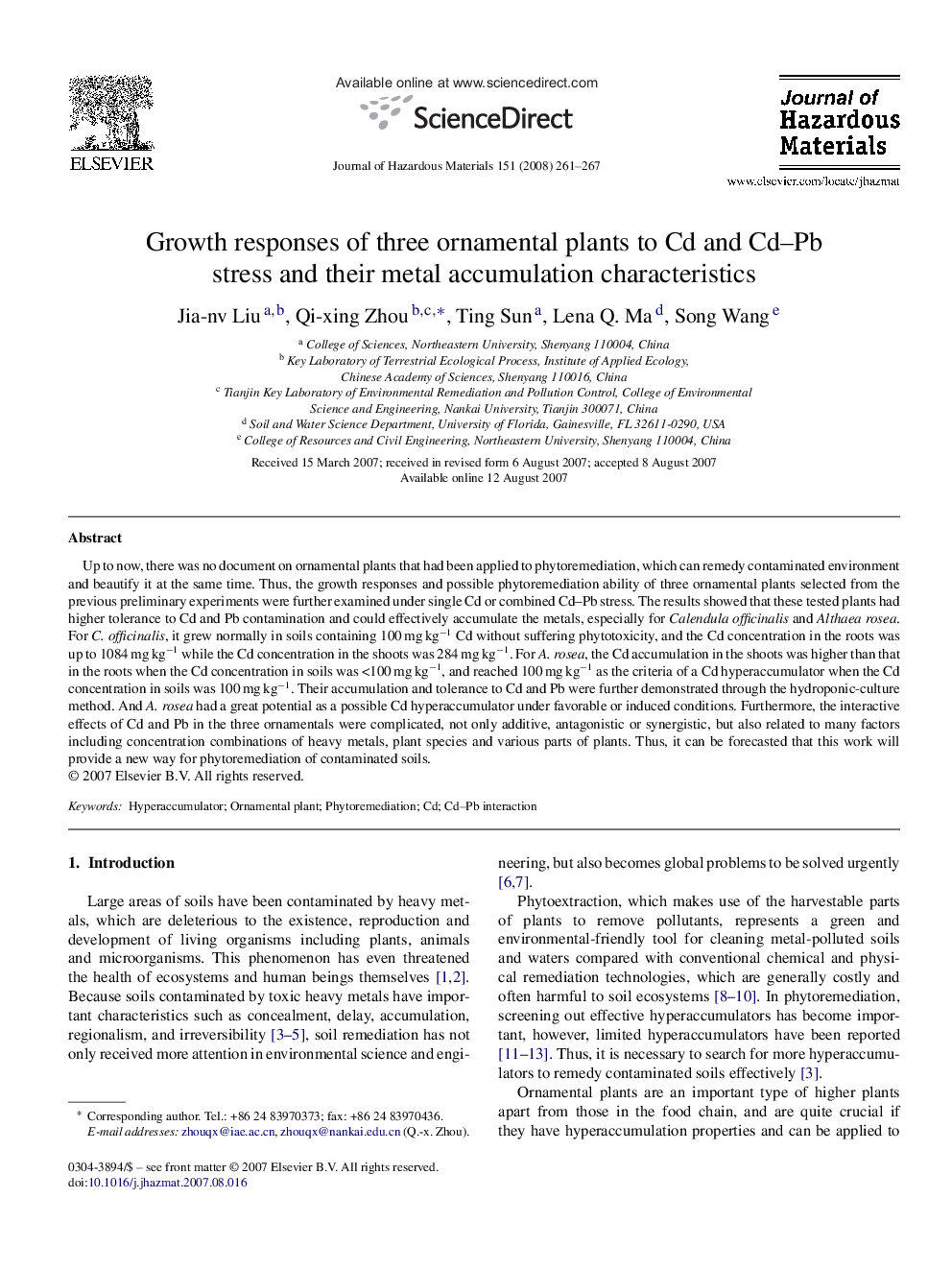| Article ID | Journal | Published Year | Pages | File Type |
|---|---|---|---|---|
| 583551 | Journal of Hazardous Materials | 2008 | 7 Pages |
Abstract
Up to now, there was no document on ornamental plants that had been applied to phytoremediation, which can remedy contaminated environment and beautify it at the same time. Thus, the growth responses and possible phytoremediation ability of three ornamental plants selected from the previous preliminary experiments were further examined under single Cd or combined Cd-Pb stress. The results showed that these tested plants had higher tolerance to Cd and Pb contamination and could effectively accumulate the metals, especially for Calendula officinalis and Althaea rosea. For C. officinalis, it grew normally in soils containing 100 mg kgâ1 Cd without suffering phytotoxicity, and the Cd concentration in the roots was up to 1084 mg kgâ1 while the Cd concentration in the shoots was 284 mg kgâ1. For A. rosea, the Cd accumulation in the shoots was higher than that in the roots when the Cd concentration in soils was <100 mg kgâ1, and reached 100 mg kgâ1 as the criteria of a Cd hyperaccumulator when the Cd concentration in soils was 100 mg kgâ1. Their accumulation and tolerance to Cd and Pb were further demonstrated through the hydroponic-culture method. And A. rosea had a great potential as a possible Cd hyperaccumulator under favorable or induced conditions. Furthermore, the interactive effects of Cd and Pb in the three ornamentals were complicated, not only additive, antagonistic or synergistic, but also related to many factors including concentration combinations of heavy metals, plant species and various parts of plants. Thus, it can be forecasted that this work will provide a new way for phytoremediation of contaminated soils.
Related Topics
Physical Sciences and Engineering
Chemical Engineering
Chemical Health and Safety
Authors
Jia-nv Liu, Qi-xing Zhou, Ting Sun, Lena Q. Ma, Song Wang,
